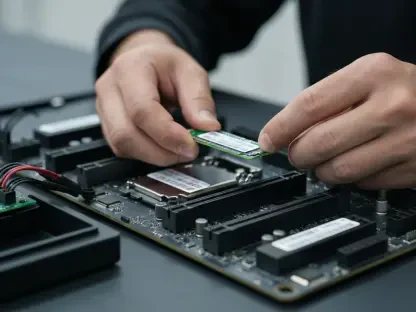With a significant development in the satellite communications industry, SatixFy Communications Ltd. (NYSE American: SATX) has announced a crucial software development and licensing agreement with MDA Space Ltd. (TSX: MDA), totaling $9 million. The deal will see SatixFy supplying modem and beamforming software for MDA Space’s Low Earth Orbit (LEO) digital satellite broadband payloads. More specifically, $6 million is allocated to support an existing MDA customer, while an additional $3 million is designated for future customer support licenses. MDA Space also retains the option to access part of the data plane-specific code for another $4 million, reflecting the potential for extended collaboration.
SatixFy, renowned for its leadership in satellite communications technology, focuses on developing state-of-the-art, radiation-hardened chipsets that bolster multi-beam digital antennas, advanced ground terminals, and on-board processing capabilities. This new agreement underscores the trust and longstanding partnership between SatixFy and MDA Space. With this collaboration, SatixFy will not only enhance its role but also participate actively in future LEO and Geostationary (GEO) satellite constellations, furthering their mission to improve satellite communications in the coming years. This strategic alliance between the two companies promises to bring enhanced performance and reliability to digital satellite payloads.
Strategic Importance and Market Position
Nir Barkan, CEO of SatixFy, emphasized the strategic importance of this pivotal deal, which positions SatixFy as a market leader capable of providing comprehensive space-grade chips and software solutions for next-generation digital satellite payloads. The company’s innovative products, such as Software Defined Radio (SDR) modems and Fully Electronically Steered Multi Beam Antennas (ESMA), conform to the advanced DVB-S2X communication standards. These products are known for their superior performance, reduced power and weight requirements, and minimized space for gateway equipment, making them indispensable for modern satellite communication needs. The deal with MDA Space further reinforces SatixFy’s commitment to pushing the boundaries of satellite technology and showcases their ability to meet complex demands.
SatixFy’s expertise in developing cutting-edge solutions caters to various mobile applications within LEO, Medium Earth Orbit (MEO), and GEO satellite communications. The company’s technologies find practical uses in aero/in-flight connectivity and communications-on-the-move, vital for maintaining seamless communication networks. Headquartered in Rehovot, Israel, with additional offices in the U.S., U.K., and Bulgaria, SatixFy’s geographical reach ensures a global impact. The agreement with MDA Space is a testament to SatixFy’s technical prowess and its growing influence in the global satellite communications landscape.
Advancement in Satellite Communications
SatixFy Communications Ltd. (NYSE American: SATX) has secured a landmark software development and licensing deal with MDA Space Ltd. (TSX: MDA), valued at $9 million. Under the agreement, SatixFy will provide advanced modem and beamforming software for MDA Space’s Low Earth Orbit (LEO) digital satellite broadband systems. Specifically, $6 million will support an existing MDA customer, with another $3 million earmarked for future customer support licenses. Additionally, MDA Space has the option to access part of the data plane-specific code for another $4 million, indicating potential for expanded collaboration.
SatixFy is a recognized leader in satellite communications technology, specializing in cutting-edge, radiation-hardened chipsets for multi-beam digital antennas, advanced ground terminals, and on-board processing. This new partnership highlights the trust and enduring relationship between SatixFy and MDA Space. The collaboration will bolster SatixFy’s role in both current and future LEO and Geostationary (GEO) satellite constellations. This strategic alliance aims to enhance the performance and reliability of digital satellite payloads, heralding a new era of improved satellite communications.









